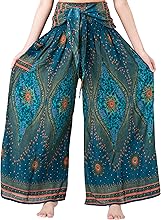
How Indigenous traditional knowledge is improving our understanding of aurora borealis
CBC
When Nicholas Flowers was young, he made sure to never whistle at the northern lights.
It was disrespectful, his grandmother taught him. "She told me, if you whistle at the northern lights, they may actually harm you by cutting off your head," he told Unreserved host Rosanna Deerchild.
It's advice that Flowers, who teaches the Inuktitut language and Inuit culture in Nunatsiavut, N.L., still follows today. "Learning about these traditions in our culture plays a big role in our survival, and also in our well-being. As Inuit we need to remember that we simply couldn't exist without the land."
While modern science explains the mechanism of the aurora borealis, members of First Nation, Inuit and Métis communities say that their traditional knowledge, which goes back thousands of years, can help explain its meaning — in mythology, legend and even weather forecasting.
The two ways of knowing can be complementary, said Jennifer Howse, an education specialist at the Rothney Astrophysical Observatory, just north of Calgary. Howse is also a member of the Métis Nation of Alberta.
Auroras are caused when charged particles that are released from the sun get trapped in the polar areas of the Earth's magnetic field. These interact with the Earth's magnetic field, creating the northern lights.
The amount of charged particles the sun releases varies on an 11-year cycle, and we're currently at the busiest time of the cycle, Howse said.
The varying colours of the lights relate to what gases in the atmosphere are being affected: green is oxygen, red is upper-atmosphere nitrogen. "It's essentially showing us our atmosphere with these colours," she said.
Intermediate colours, like purple, magenta and even blue, result from different gases reacting. "These gases are coming together, almost like when you're mixing paint colours," Howse said.
Howse said that although newer technologies are teaching scientists about auroras, there are still many mysteries, which can be addressed by Indigenous stories.
"Northern Canadians have so much mythology around the aurora. If you listen to the stories, you'll hear all of the science, and all of the observations," she said.
The First Nation science involves understanding the timing of the lights, their colours, how they move, and how those movements might impact weather, for example. "[The stories] use a lot of wonderful metaphors of things that we understand in our relations with ourselves and with the natural world," Howse said.
She compared Indigenous stories to ancient Greek maps of the sky, "that tell you about the sky, of course, but it also tells you about that ancient Greek astronomer and their perception of the sky overhead."
It would be difficult to find anyone who gets more excited about the northern lights than Joe Buffalo Child.





















 Run 3 Space | Play Space Running Game
Run 3 Space | Play Space Running Game Traffic Jam 3D | Online Racing Game
Traffic Jam 3D | Online Racing Game Duck Hunt | Play Old Classic Game
Duck Hunt | Play Old Classic Game











